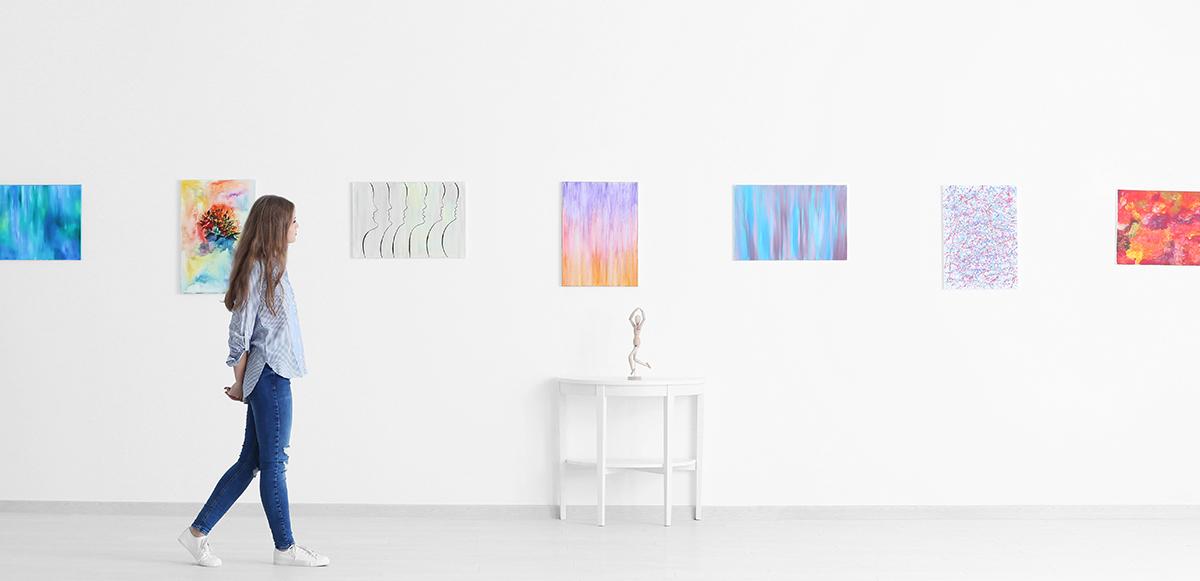News, articles, and interesting stuff from the College of Business
Haptic Instincts Guide Human Desire to Buy
Dr. Ryann Reynolds-McIlnay finds that our haptic instinct — our desire to touch — can increase our engagement and interest in tangible as well as fully intangible objects.

Ryann Reynolds-McIlnay, Faculty Research Profile
Long before Dr. Ryann Reynolds-McIlnay, assistant professor of marketing and merchandising management, was investigating the effects of retail environment stimuli on shopper behavioral and affective responses, she was gaining insights on consumer behavior, wired to notice shopper marketing, atmospherics, and sensory marketing.
Originally from central Pennsylvania — her mother ran an art gallery, her grandmother a general store in a ski-resort town — Reynolds-McIlnay grew up in retail spaces, helping out, interacting with customers, and honing what she calls her X-Men mutant sensory superpowers.

“I tend to recognize and observe sensory stimuli that others don’t because my nervous system is naturally more sensitive than that of the average person,” Reynolds-McIlnay said.
She’s a super taster with more taste receptors than average, showing more sensitivity to bitterness; she’s reactive to cold, and she also registers on the high end of the autotelic dimension of the Need for Touch Scale. Essentially meaning she’s driven to touch everything, just as part of her haptic information processing.
Haptic information, meaning related to the sense of touch, is also an important part of her research portfolio, and here’s an example of her X-Men powers at work:
Reynolds-McIlnay in “On the Other Hand…: Enhancing Promotional Effectiveness with Haptic Cues” for the Journal of Marketing Research builds on the concept that we humans, because of our haptic tendencies, like handles. Things we can grab, things we think we can own. Marketing that uses images of things with handles pleases us, especially if the handle is pointed to the right (to accommodate about 90% of the world’s right-handed population). A coffee mug with a handle, if positioned correctly, can increase our interest in a wall painting, e.g. something that’s difficult to touch. Because we tend to get the feeling that we want to get our hands on — even buy — the things that are near the graspable item.
Reynolds-McIlnay finds that our haptic instinct is even more powerful than that. She says haptic cues can also increase our engagement and interest in a fully intangible object — a service, in fact. By using a relatively unrelated object with a handle, we humans, our brains, wanted to grasp the object, and so we begin forging our connection to the service.
Reynolds-McIlnay and her research team used a potato peeler with the handle oriented toward the viewer’s right hand versus left hand, and tripled the number of new applications to the store’s customer loyalty shopper club. Yes, a potato peeler pointed to the right attracted more customers to a shopping program.
Beyond these X-Men insights, Reynolds-McIlnay points out that touch and haptics are extremely important for the entire store channel experience, citing haptics as one of the major reasons that stores are transforming themselves to as showrooms and distribution centers to support online and mobile channel purchases.
Her other published research insights are equally curious, but fascinatingly logical: that a navy blue sweater will sell the best if appearing in a tidy display, or that sound effects – the clicks and beeps of online shopping or in-store equipment – increase customer trust and satisfaction.
Reynolds-McIlnay points out that any retailer, large or small, can incorporate these types of research findings into their display strategic decisions. “Smart companies understand that you want to intentionally design as much of the environment as possible with the target customer in mind,” she said.